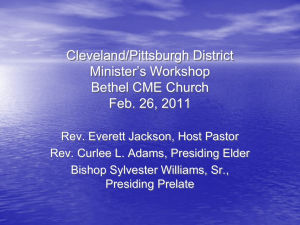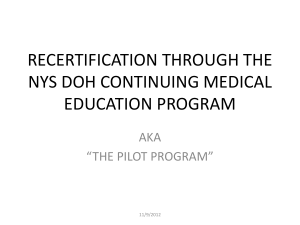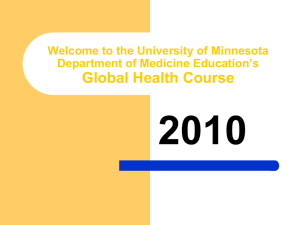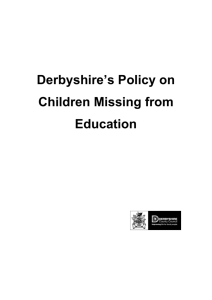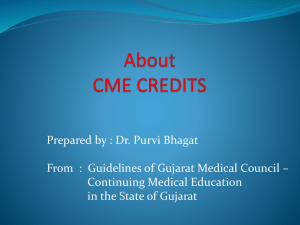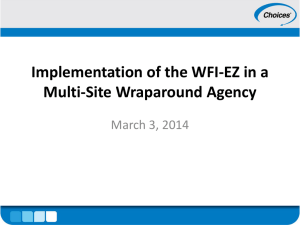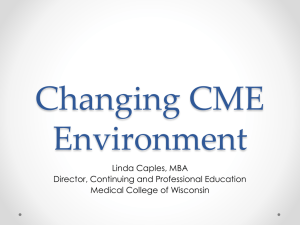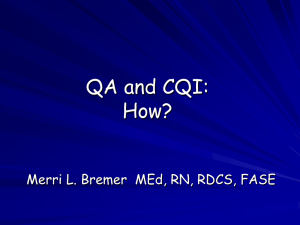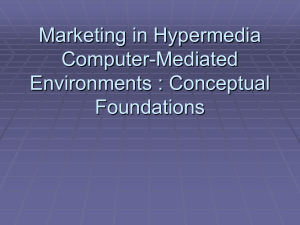Care Management Entities in Georgia*s System of Care
advertisement
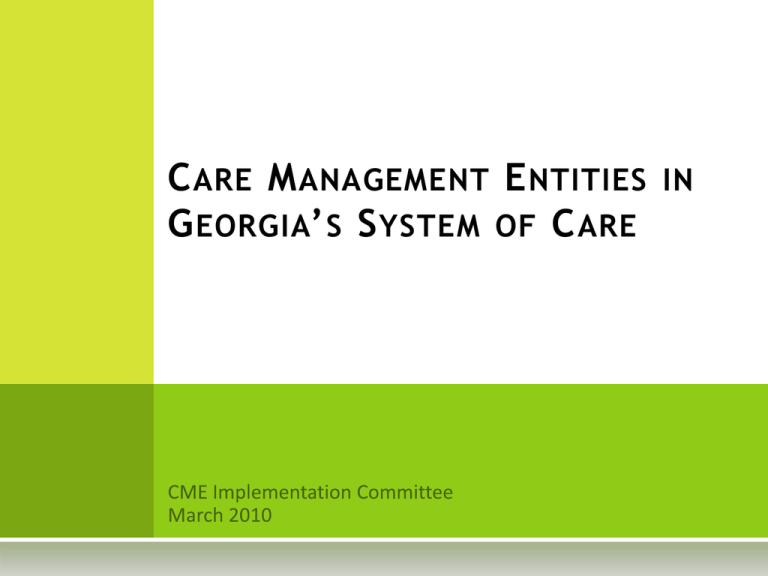
C ARE M ANAGEMENT E NTITIES IN G EORGIA’ S S YSTEM OF C ARE C ARE M ANAGEMENT E NTITIES Role of CMEs in Georgia’s System of Care What is a CME? High Fidelity Wraparound as the practice model How CMEs embody the Collaborative priorities for the SED population Key Findings of initial evaluation report Ongoing opportunities and challenges Inter-agency on the ground: the DFCS crosswalk SOC: T HE BIG P ICTURE SOC as framework and value base Cluster of organizational change strategies based on values and principles intended to shape policies, regulations, funding mechanisms and services & supports Involves complex system change Three familiar pictures to illustrate how CME fits into SOC approach SYSTEM OF CARE AT THE INDIVIDUAL LEVEL neighborhood health Community and recreation vocational DBHDD We want families in a SOC approach to experience: • Family driven • Youth guided • No wrong door • Collaboration • Combination of natural and professional Youth and family Public health DJJ Faith community DFCS Extended family and friends school SUSTAINING SYSTEMS OF CARE Philosophy Infrastructure The CME is an element of SOC infrastructure Services and Supports PREVALENCE UTILIZATION TRIANGLE TARGET POPULATIONS IN A SYSTEM OF CARE Intensive Services 60% of $$$ 2-5% CMEs are the top of the triangle, targeting the highest risk youth in restrictive, costly placements 15% 80% Early Intervention Home & Communitybased; school-based 35% of $$$ Prevention & Universal health promotion 5% of $$$ W HAT IS A CME? Set of identifiable structures & processes to support the organization, management, delivery and financing of services and supports across multiple providers & systems. CME creates a single locus of accountability to serve youth and families in the community, in the context of Georgia’s System of Care (SOC). It is a quantifiable entity, with staff, minimum standards, funding streams, outcomes. Is our SOC achieving outcomes for youth with SED and their families? The CME is the place this will be answered C OMMON E LEMENTS OF CME Child and Family Teams, responsible for development, coordination, and monitoring of individualized plans developed in a family-driven model; Intensive Coordination of formal, informal and natural supports; Quality Assurance to assess and improve the implementation of wraparound and adherence to values; Utilization Management to support real time analysis of services and the cost and effectiveness of services; Provider Network Management, with responsibility for network recruitment, organization and oversight; Evaluation, including outcomes for youth and families served across life domains. CME P RACTICE M ODEL High fidelity Wraparound is the core practice If it’s easy, you’re probably not doing wraparound! Care Coordinator is NOT a Case Manager and is NOT doing things FOR a family. The skill being developed is facilitation of the Child and Family Team process What makes it “high fidelity?” Caseload size Constant monitoring, observation, feedback, coaching Skill sets for Wrap Supervisors, Family Support Partners, Care Coordinators CME AS MIRROR OF C OLLABORATIVE FOR SED Collaborative has 5 Committees (priorities) Family and Youth Involvement Interagency Collaboration Workforce Development Financing CBAY The CME embodies these functions for the target population CME S IN G EORGIA Competitive selection process, state named 4 CMEs : CHRIS Kids, Inc. GRN Community Service Board Lookout Mountain Community Services MAAC (Multi Agency Alliance for Children) Since Aug., 2009: Hired staff, trained on new practice model, implemented minimum standards, developed a database to match the practice of wraparound (building on KidsNet success), established eligibility and target population, serving youth and families Almost 300 multi-agency high risk youth and families enrolled in CME (waiver and non-waiver) E ARLY F INDINGS FROM E VALUATION REPORT EMSTAR Research just completed 6 month evaluation of implementation Referrals from variety of pathways: Community partners (mh, parents, schools) KNIS DFCS CSPs CBAY Common criteria: High risk for out of home placement, Average initial CAFAS scores 131 (non-waiver) & 153 (CBAY) E ARLY F INDINGS FROM E VALUATION REPORT Fidelity to the Wraparound model: meeting timelines for contact w/in 48 hours (91%), Families choosing meeting locations (initial 92%; first CFT 80%) Strong evidence of inclusion of natural supports, and revisions to the Wraparound Action Plan ALOS in wrap is 12 – 14 months - outcome data not available, but improved reports of improved functioning and satisfaction (families and youth) evident in early stage O PPORTUNITIES A HEAD OPPORTUNITIES Partnership with DBHDD and growing with DFCS Great commitment from staff and CME Directors Advancing from fidelity to minimum standards to quality CHIPRA federal grant (technical assistance and focus on Family Support Partner role) Continued training from MD partners and developing Master Trainers in state CME Implementation as “learning organization” C HALLENGES AHEAD CHALLENGES SUSTAINING - Billable functions and non-billable essentials Incorporating new CMEs Incorporating new target populations Expected attrition of front line staff Unknowns with administration change Database development Provider network management- CME is dependent upon viable, high quality provider network! P LEASE N OTE CMEs are in their infancy stage…learning wraparound, learning CME functions. Success only if administration (local, state, regional) supports wraparound CMEs make sense if recognize the shared problems: Silo funding restrictive placements Families must drive decisions Goal: Producing desired outcomes across life domains through effective development and utilization of formal and informal resources T HE DFCS C ROSSWALK Why we conducted the crosswalk between CFT process in high fidelity wraparound and DFCS Family Team Meetings Findings and implications of the crosswalk What is happening in practice for youth in the CME F INAL NOTES CME as vehicle for change in SED What’s different? High fidelity wraparound (Facilitating a Teambased strengths-based and family driven process) Development of natural and informal supports Still need high quality providers Accountability Requires inter-agency commitment to high risk youth to sustain

